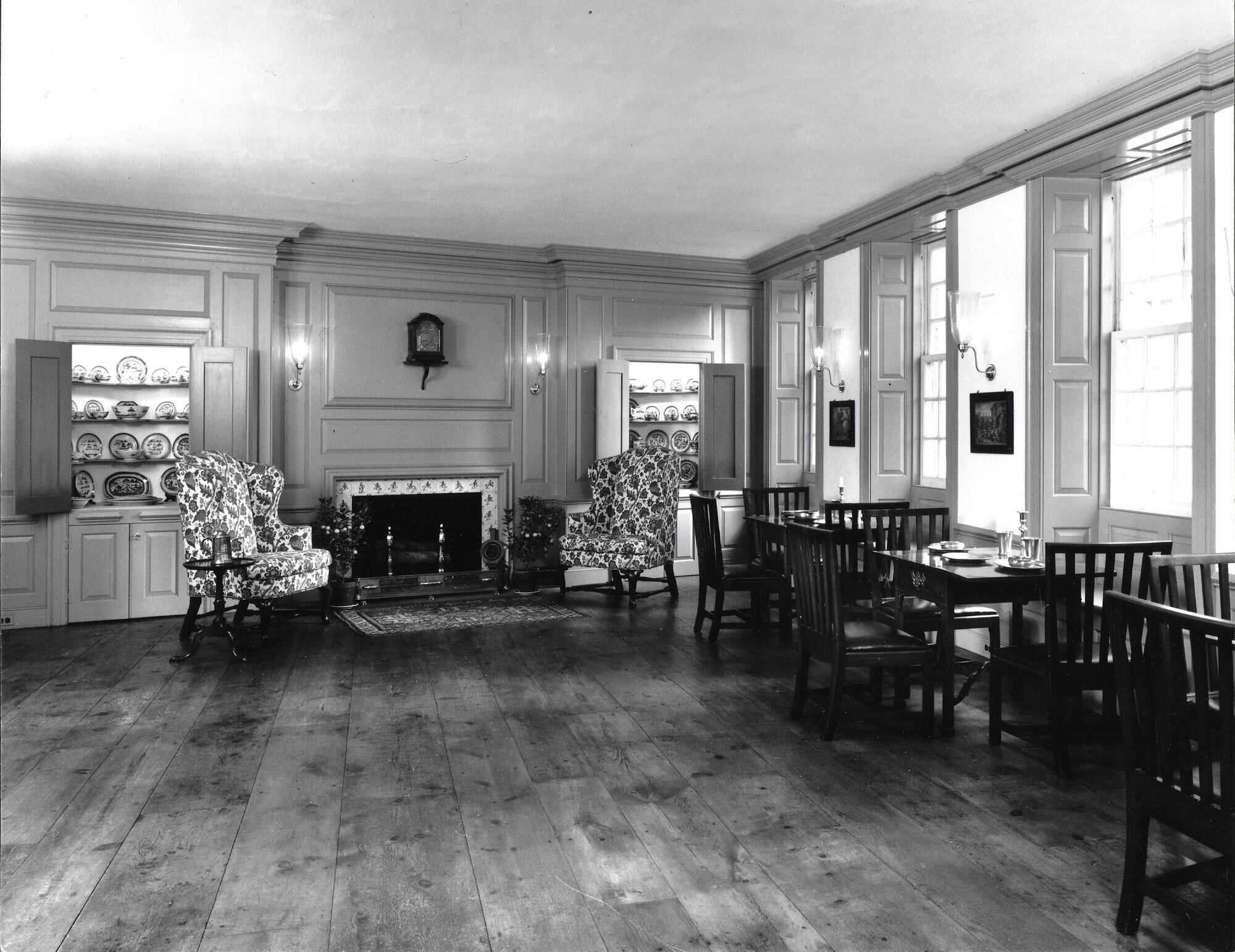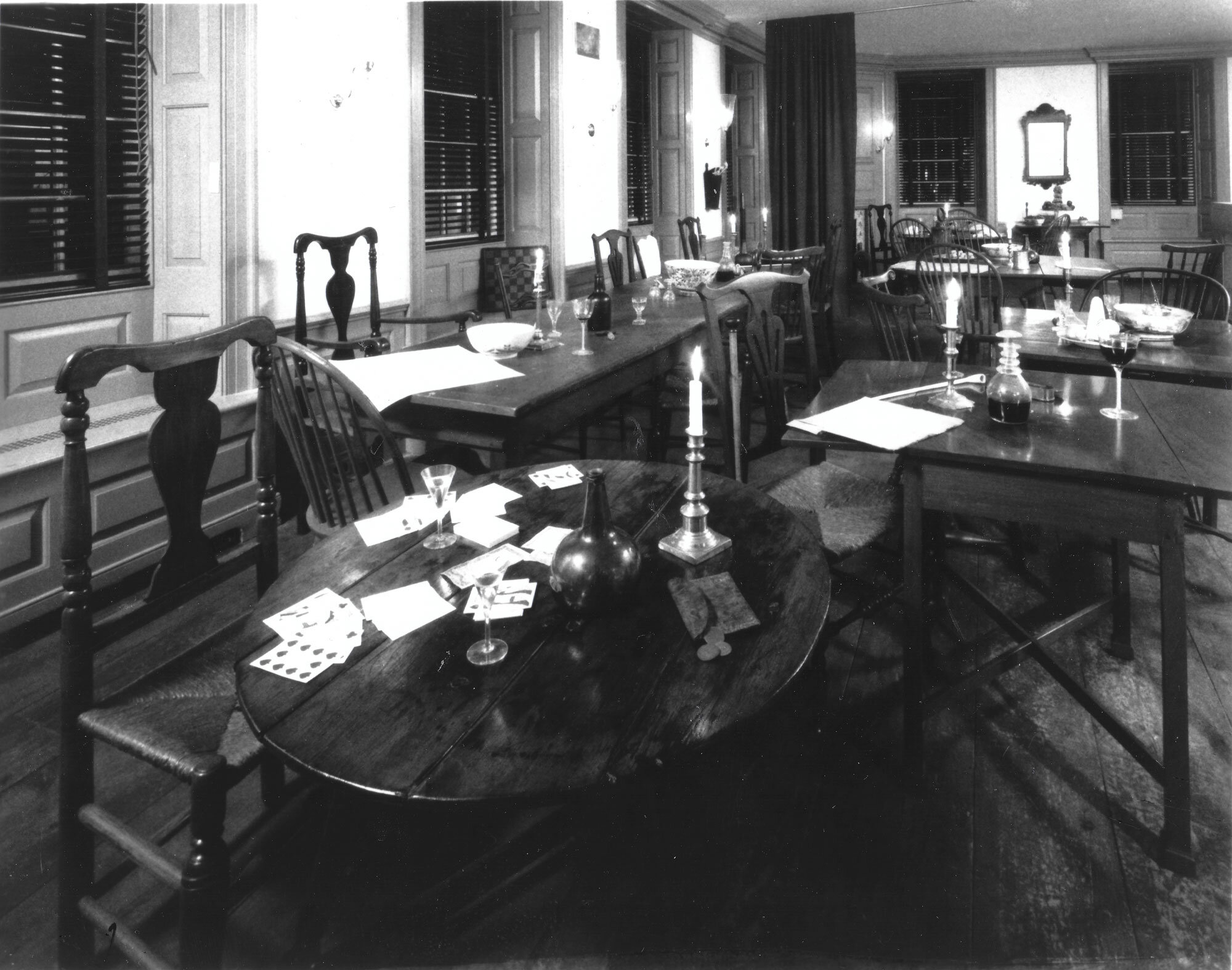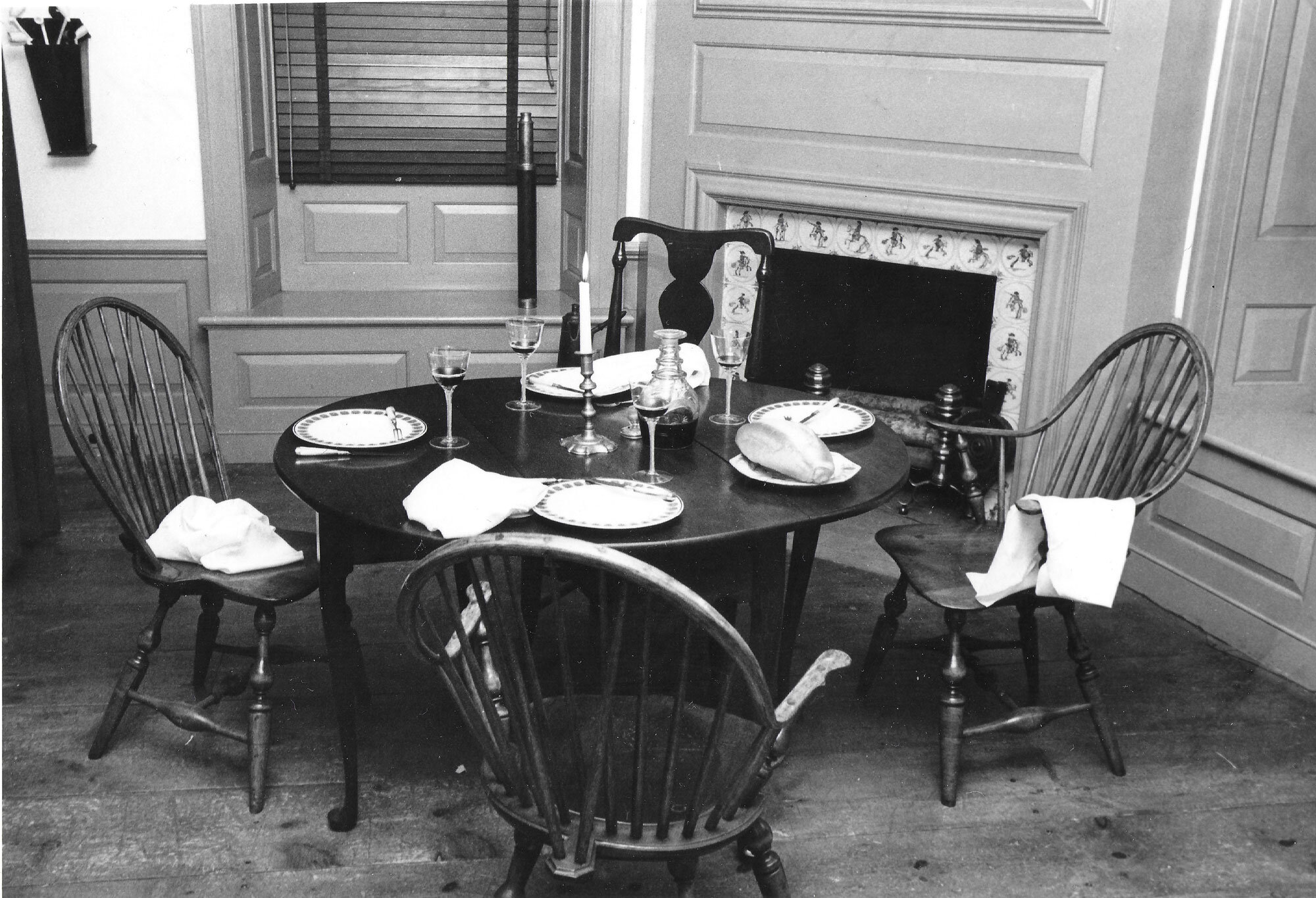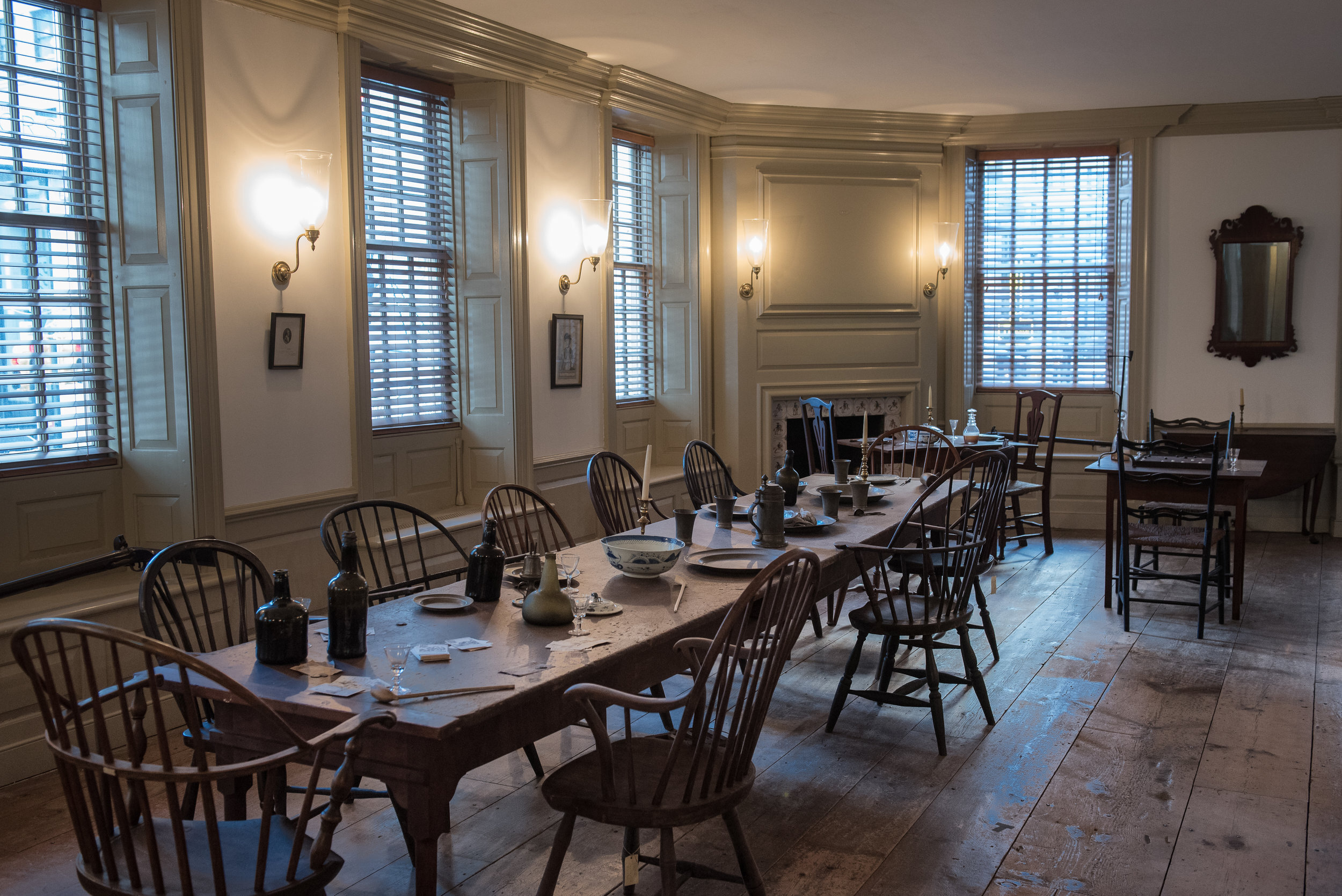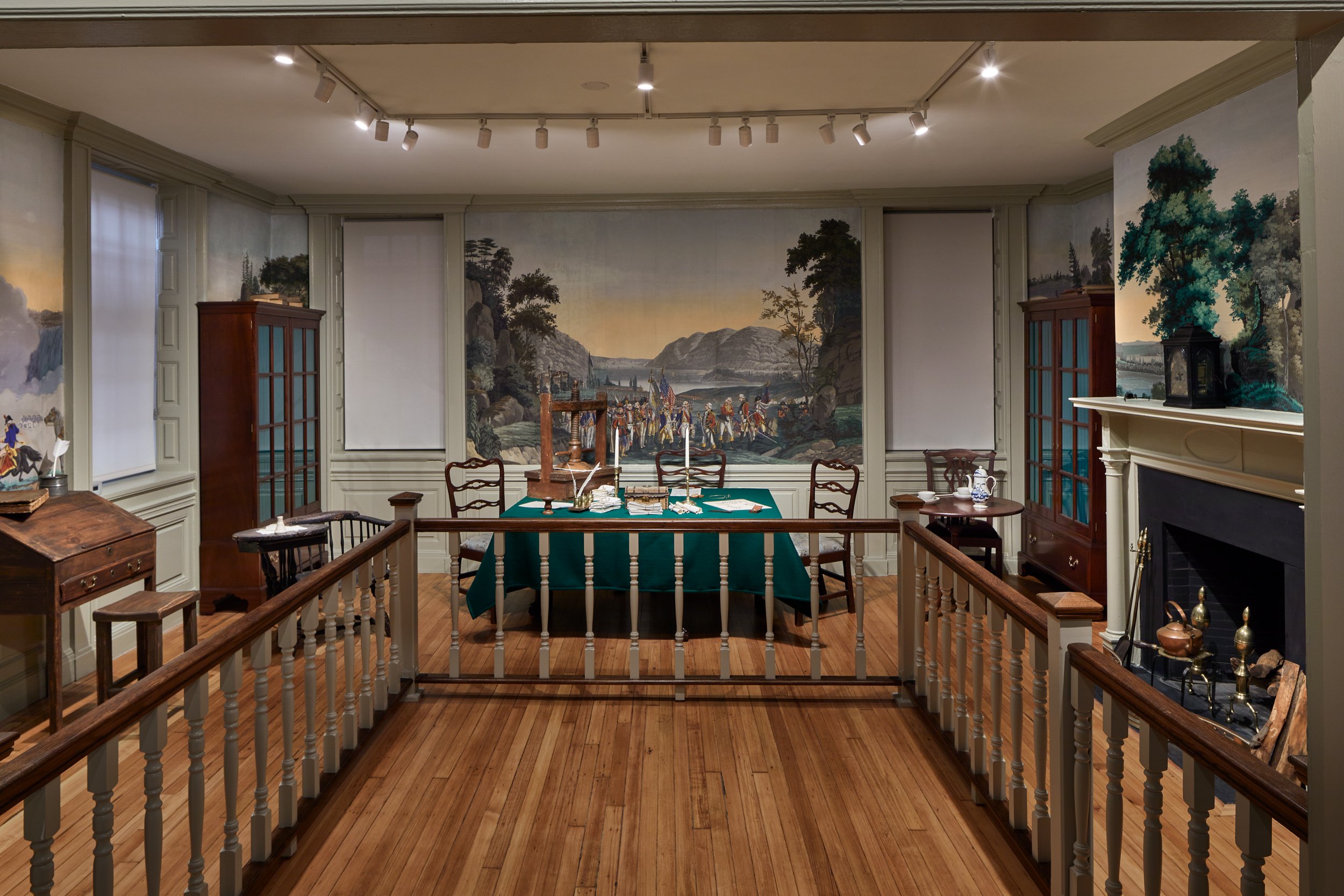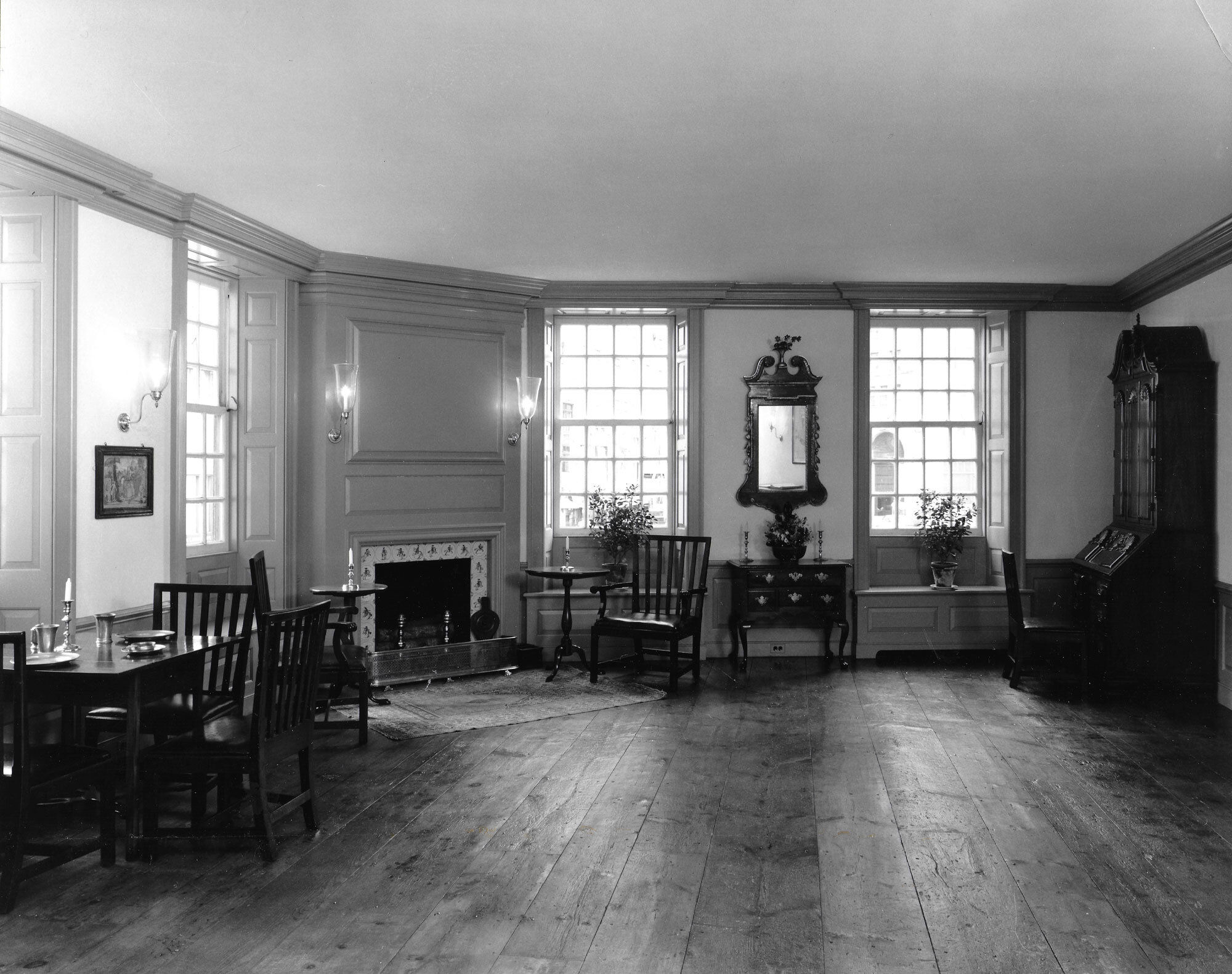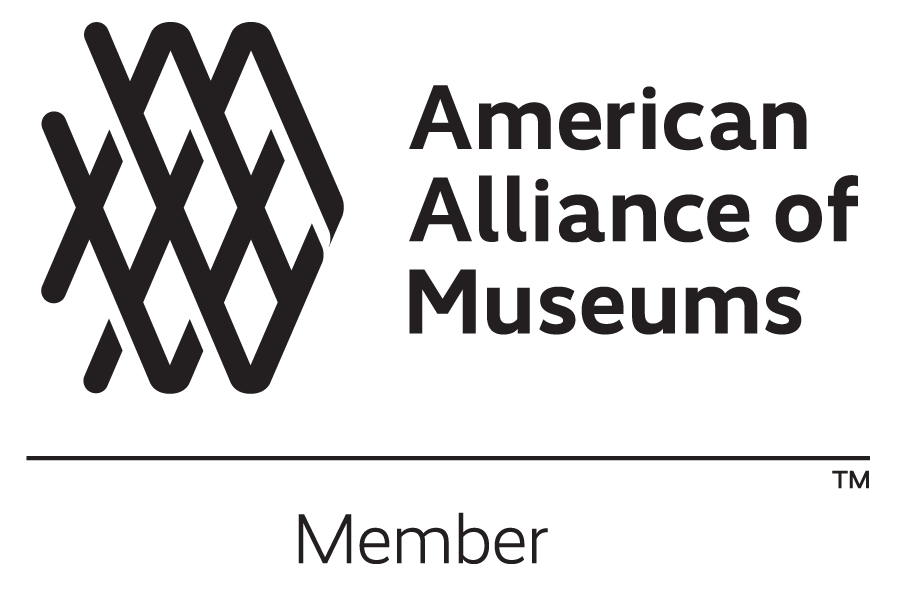The Long Room at Fraunces Tavern Museum
First built in 1719 by Stephen De Lancey as a family home, the building that houses Fraunces Tavern Museum today has lived many lives. From 1719 until the mid-1730s, the 741-square-foot room on the second floor served as a drawing room in the De Lancey’s mansion (though it is unclear if the De Lanceys ever lived in the building). When the De Lanceys leased the building out for commercial activity the space became known as the Long Room, and it quickly grew into one of the most important community hubs in Lower Manhattan.
Explore the archive below to learn more about the history of the Long Room at Fraunces Tavern Museum and its days as part of a tavern, government offices, boarding house, and eventually, a museum.
1737 - 1740 - Master Holt's Dance Hall
Henry Holt’s advertisement in the New York Gazette, 1739.
Henry Holt was a former dancer and actor in England before he arrived in the colonies. He first appeared in Charleston, South Carolina, where he formed one of the earliest theater companies. In 1737, Holt arrived in New York City and rented space in 54 Pearl Street. He used the space as a dance hall, offering classes on the latest dance trends, like the Baroque dance technique, which was popular in England at the time. According to newspaper advertisements, Holt offered free dance classes on Monday and Thursday afternoons in the summertime. He also produced a variety of puppet shows. One of the most famous productions by the Holt Company, Harlequin and Scaramouche; or the Spaniard Trick’d, was performed in the Long Room. The show’s last performance on February 21, 1739, was advertised in the New York Gazette.
What is a Long Room?
A Long Room is, as its name suggests, a room of considerable length inside of a tavern. Primarily used for dancing, these rooms were narrow and sparsely furnished. Urban taverns typically rented out their Long Rooms for parties, public balls, and private events.
The second floor room at 54 Pearl Street likely received its Long Room designation when it was used by Holt to offer dance classes.
1762 - Samuel Fraunces Purchases 54 Pearl Street
An ad placed by Samuel Fraunces in the New York Gazette, when 54 Pearl Street was known as the Queen's Head Tavern. December 1764.
Samuel Fraunces bought 54 Pearl Street on January 15, 1762, and opened the Sign of the Queen Charlotte (also known as the Queen’s Head Tavern). The tavern became a popular meeting place because it was located near Lower Manhattan’s bustling Great Dock, and because of Fraunces’ culinary skills. He offered some of the best food in the City, including steak, mutton, pork chops, and of course, fresh oysters, which could be served fried or pickled. The Sign of the Queen Charlotte became so popular with the locals that they began simply referring to it as “Fraunces’ tavern.”
Fraunces gives the only known “accurate” description of what the building looked like in the 1760s and 70s in an advertisement he published in 1764. He describes the tavern as,
“three stories high, with a tile and lead roof, has fourteen fireplaces, a most excellent large kitchen, fine dry cellars, with good convenient office, sufficient for a large family, the business above mentioned, a merchant, or any other trader, is a comer house, very open and airy, and in the most compleat repair, near to the ferry.”
Samuel Fraunces’ Long Room
Fraunces rented out the tavern’s Long Room for meetings, private parties, and other events. It quickly became one of the most popular meeting places in New York City. In the broadside above, Fraunces also advertises the Long Room at another tavern he operated, Vauxhall Gardens. This second establishment included manicured gardens and a wax museum, and its Long Room likely saw more dancing than the Long Room at the Sign of the Queen Charlotte.
1770s - A Revolutionary Headquarters
Inside an ordinary by Edwin Tunis. Date unknown.
In the mid-1770s, taverns were important public spaces for colonists to gather and discuss, deliberate, and debate their grievances against Parliament. More often than not, the seeds of the revolution were planted in taverns alongside the ale they drank. Samuel Fraunces was a well-known patriot, opening his tavern to those sympathetic to the revolutionary cause. The first floor of the tavern was open to the public and the second floor was made up of smaller rooms, like the Long Room, which were reserved for private events. The New York Sons of Liberty used the tavern as one of their secret headquarters in the 1770s, likely meeting in the Long Room.
In May 1775, Fraunces opened his doors to the New York Provincial Congress, which was then founded in the Long Room. The Provincial Congress acted as a temporary government for the colony throughout the Revolution. They were initially formed as a convention to choose delegates to participate in the Second Continental Congress. Many other revolutionaries passed through the tavern, likely taking private meetings in the Long Room.
December 4, 1783 - Washington's Farewell
Washington’s Farewell to his officers by G.H. Buck.
On December 4, 1783, nine days after the last British soldiers left American soil, General George Washington delivered his Farewell Address to his officers in the Long Room at Fraunces Tavern. Colonel Benjamin Tallmadge described the event in his memoir, which is the only first-hand account of this emotional scene. The memoir is on display in the McEntee gallery at Fraunces Tavern Museum.
The memoir reads,
“After partaking of a slight refreshment in almost breathless silence, the General filled his glass with wine and, turning to the officers, said, ‘With a heart full of love and gratitude I now take leave of you. I most devoutly wish that your latter days may be as prosperous and happy as your former ones have been glorious and honorable.’”
After embracing each officer and wishing them well, Washington left for Annapolis, where he resigned his military commission before traveling on to Mount Vernon.
1785-1788 - First executive governmental building that housed three offices of the Confederation Congress
The tavern was an important social space for discussing politics up to and throughout the Revolution. It continued to operate as a civic space when, in 1785, the newly-formed Confederation Congress rented out rooms in the tavern for the offices of the Department of Foreign Affairs, led by John Jay. The Department was on the second floor of the building and likely adjacent to the Long Room. The Departments of War led by Henry Knox and offices of the Board of Treasury also occupied the building. Fraunces sold the building to butcher George Powers shortly after leasing it to the government.
1800-1877 - After the Revolution
Courtesy of the New York Public Library.
Draft Plans of William H. Mersereau, 1890.
Throughout the 1800s, 54 Pearl Street was run predominantly as a boarding house with a bar on the first floor. As the City continued to grow, so did the area around 54 Pearl Street. Between the years of 1827 and 1833, eleven other buildings on the block were built.
In 1832, 1837, and 1852, the building was damaged by several serious fires. After each fire, the owner at the time rebuilt and added modern additions. By the end of the 19th century the building bore little resemblance to the original structure. Two new floors and a flat roof were added. Upper floors were each divided into thirteen bedrooms and one toilet to accommodate boarders. The Long Room, however, was not divided into small rooms and remained a public room.
This 1877 sketch depicts the Long Room as a large open space. The draft plans from architect William H. Mersereau, who restored the building in 1905, also show the Long Room as a space separate from the boarding house rooms.
1880s - Jacob Etzel Boarding House
Fraunces Tavern when it was the Jacob Etzel Hotel at 54 Pearl Street from Pearl and Broad Street, facing east. 1881.
Jacob Etzel ran the tavern and boarding house between 1881 and 1895, allowing renters to board by the week. This picture shows Etzel to the left of the lamp, standing with the people who were boarding at the time. His wife and child are in the Long Room, looking out of one of the second-floor windows. The Etzel family lived in the boarding house alongside its tenants, serving communal meals in the Long Room. Etzel advertised “the best selected Stock of Imported Wines, Liquors and Segars” on small business cards for the tavern below.
1883 - Sons of the Revolution is Founded in the Long Room
Sons of the Revolution in the Long Room, 1890s.
Sons of the Revolution was founded in the Long Room on the 100th anniversary of Washington’s Farewell to his officers. Sons of the Revolution is a genealogical society that traces their ancestors back to men who participated in the Revolutionary War. In 1904, the organization purchased 54 Pearl Street and, to restore the building, undertook one of the largest preservation projects in the early 20th century. In 1907, Fraunces Tavern opened as a museum and restaurant, with the mission of continuing the memory of the Revolutionary War.
1905-1907 - Restoration of 54 Pearl Street
Corner of the Long Room with William Mersereau's notations. 1905-1907.
Frederick S. Tallmadge, a member of Sons of the Revolution and the grandson of Benjamin Tallmadge, head of the Culper Spy Ring, spearheaded the purchase and preservation of 54 Pearl Street.
In October 1905, William H. Mersereau, a preservation architect, was contracted by Sons of the Revolution to begin the restoration of 54 Pearl Street. Mersereau’s detailed notes and letters offer a closer look into one of the nation’s first and largest restoration projects of its kind. Most of the surviving architectural elements dating back to 1719 were found within the walls of the Long Room:
“The selfsame beams on which Washington stood are there beneath the floor of the “Long Room” today and the tier above is the same and old walls are the same. Further we cannot go. The Long Room as it existed lately, contained not a vestige of woodwork, sash, etc. that I had in Washington’s time. The fire of 1854 burned the room out. Evidences of this fire have been continually met with, and we have been able to prove all the woodwork, including doors and staircase, were put in since the state of the fire. The old hewn beams, however, exist still in the hallway, in the floor and the ceiling of the second and third stories on Pearl Street. Here and there on the underside of these old beams are vestiges of hand-split laths and hand-made nails, proving that the old ceilings were plastered and that the beams were not exposed.”
The restoration of the building was completed in 1907.
1918 - Liberty Bonds
Sons of the Revolution in the State of New York sell war bonds during World War I outside of Fraunces Tavern. 1918.
Throughout World War I, Sons of the Revolution sold Liberty Bonds in the Long Room to help raise money for the wartime effort. During World War I, many businesses sold these war bonds out of their businesses as a sign of patriotism.
20th Century - The Long Room for Rent
Facing Pearl Street, Pre-1940s.
Facing Water street, pre-1971
advertisement from february 4, 1949.
Throughout the 20th century, the Long Room remained open to the public. This restaurant menu from 1915 invites patrons upstairs to visit the Museum and Long Room, which at the time, could be rented out for parties and banquets. The Long Room remained open for rentals until it was reinterpreted as a period room in 1971.
Between the 1940s and the 1960s, Sons of the Revolution purchased four additional buildings: 58 Pearl Street, 101 Broad Street, and 24 and 26 Water Street. Together, with 54 Pearl Street, the area came to be known as the Fraunces Tavern Museum Complex. In 1965, 54 Pearl Street was designated a New York City Landmark.
New York Subways Advertising Co created an advertisement for the Long Room at Fraunces Tavern Museum in 1949.
Pre-1971 - The Long Room Reimagined
facing water street, 1970-1971.
As the country began planning Bicentennial celebrations towards the end of the 1960s, Sons of the Revolution announced an ambitious project: to restore the entire Fraunces Tavern Museum Complex. They began by replacing the roof of 54 Pearl Street, and then turned their attention towards the Long Room. They hired architect Gerald R. W. Watland, who specialized in 18th century restorations, to complete the project. Watland stripped the Long Room back to its studs and revealed what was believed to be original bricks and beams from the 18th century structure (pictured here).
The Long Room was then reassembled and furnished to present the room George Washington would have seen when he delivered his Farewell Address in 1783.
April 15, 1971 - Becoming a Period Room
Facing water street, 1971.
The newly restored Long Room was officially reopened on April 15, 1971 in a ceremony hosted by Sons of the Revolution after more than a year of research to authenticate its appearance. They invited Delancey Kane Hollos, a direct descendant of Stephen De Lancey, the building’s original owner, to cut the ribbon with Sons of the Revolution President Charles S. Whitman Jr. The gathering was a reminder that Fraunces’ direction cemented the Long Room’s legacy as the city’s foremost meeting place.
1971 - The New Long Room
facing water street, 1971.
The Long Room and the building’s authentication process were directed by Watland, who added back the details of the room likely seen by George Washington at the time of his Farewell Address. Watland’s work at Fraunces Tavern continued the plans first created by Mersereau, who conducted extensive studies of the building’s original components and spearheaded the restoration work which was completed in 1907. The nature of Mersereau’s work was in connection with reopening the building as a showpiece museum which also preserved the colonial heritage vested in it. Previously, the building’s owners used the tavern’s upper floors for commercial activities. Watland’s more recent studies of the Long Room’s appearance during George Washington’s time verified the architectural knowledge of the room provided by Mersereau, enabling this restoration to take place.
facing broad street, post-1971.
facing water street, post-1971.
1973 - 1980 - An Educational Resource
A group of school children, 1973.
Each year, students from all over New York City visit the Long Room to experience the room where General Washington said farewell to his officers. In a city where the physical spaces visited by Washington and other figures of the American Revolutionary era have overwhelmingly been replaced by skyscrapers, the Long Room showcases the power of preserving those spaces for future generations. The interpretation of the Long Room as it would have looked at Washington’s Farewell places students in the footsteps of the Founding Fathers, giving relevance and urgency to historical events that can feel like a distant memory.
Facing Pearl Street, 1973.
In the decades following its reinterpretation, the Long Room went through a series of upgrades. Tables, paintings and images, and other accessories were changed in and out, and railings of various styles were added to allow the public to experience the room from a safe distance.
Facing Water street. 1980.
Facing Pearl street, 1980.
December 1982 - Kym Rice Reinterprets the Long Room
The Long Room, 1983.
In December 1982, Fraunces Tavern Museum opened Taverns: For the Entertainment of Friends and Strangers, a museum-wide exhibition that explored the role of taverns in early America. Led by guest curator Kym Rice, the exhibition included a reinterpretation of the Long Room. It included over 150 colonial artifacts, including broadsides, maps, and paintings.
When the Long Room was first turned into a period room in 1971, it had the appearance of a colonial era tavern. When Rice reinterpreted the room she added furniture and artifacts dating back to the 18th century which were likely found in urban taverns. One of the most important pieces installed in 1982, which is still on display today, is the 13-foot-long central dining table. This table dates to the 18th century and was likely made in Connecticut or Rhode Island. It was originally loaned to the Museum by Israel Sack, Inc., an antiques dealer that specialized in early American furniture whose founder was instrumental in developing leading private collections and those of nearly every major museum in the United States starting in the early 20th century. The table was ultimately purchased by the Museum in 1998 with funds from SRNY board members Stanley DeForest Scott, Craig Hamilton Weaver, and James Flood Stebbins. Several glass bottles from the excavation of the former Lovelace Tavern across the street, which was torn down in 1706, were also put on display.
The Long Room, detail. Post-1983.
The Long Room, detail. Post-1983.
Curator Kym Rice and Director Christine Miles, 1983. Courtesy of Americana.
Rice, a freelance curator who specializes in the 18th century, was hired by Museum Director Christine Miles to curate Taverns. She spent two years researching and designing the exhibition and wrote an accompanying book for the Museum with the same title.
In a 1983 article for Americana, Miles described Taverns as “more than just a temporary show. The original research that went into it has improved and will continue to improve the quality of our interpretation to the general public.”
Pictured here are Kym Rice (left) and Christine Miles (right) dressed in 18th century clothing, playing cards at one of the tables in the Long Room in 1983 with four wine glasses dating back to 1795.
2015 - The Room Where it Happened
The original broadway cast of hamilton, 2015. courtesy of the new york times.
Tavern scenes in Lin Manuel Miranda’s Tony award-winning musical Hamilton were inspired by Fraunces Tavern, and the cast gathered in the Long Room in 2015 to explore the revolutionary space. This wasn’t the first time Alexander Hamilton and Aaron Burr met at the tavern.
On July 4, 1804, Hamilton and Burr attended the Independence Day dinner in the Long Room hosted by the Society of the Cincinnati. By this time, the infamous duel had already been scheduled. According to several accounts, Hamilton danced around on tables singing military songs while Burr conducted himself with restraint. It is unclear whether or not the men even greeted each other that night.
2019 - A Closer Look
Upgraded reader rail, 2019.
In December 2018, Fraunces Tavern Museum received a grant from the John Ben Snow Memorial Trust to upgrade the famous Long Room. The Long Room Enhancement Project involved the combined efforts of many Museum staff members working to design and install a new reader rail which engages the public in innovative ways. The design of the rail itself was inspired by the pre-existing environment of the period room, styled to blend in with the architecture and design of the room. The rail has also been constructed to allow a greater number of visitors to comfortably access the room at one time, a feature that not only makes the room more accessible, but also permits visitors to move deeper into the space for a closer look at the artifacts on display.
December 4, 2020 - Washington's Farewell
Still from Washington’s Farewell, 2020.
Filming Washington’s Farewell, 2020.
Each year, Fraunces Tavern Museum celebrates the anniversary of George Washington’s Farewell Address with reenactments of the emotional scene. In 2020, the Museum brought Washington’s Farewell Address from the Long Room into living rooms across the country with a new film, Washington’s Farewell. Directed by Education & Public Programs Coordinator Mary Tsaltas-Ottomanelli, the film reimagines General Washington’s emotional parting with his officers in the Long Room on December 4, 1783.
2022 - 2025 - New Acquisitions
In 2022, the Museum installed a plaque commemorating forty years of contributions by Stanley DeForest Scott and Craig Hamilton Weaver, who donated and assisted in the acquisition of many of the objects on display. A liquor chest owned by Baron von Steuben, an object from the Museum’s permanent collection most recently featured in our past Valuable exhibition, was also installed.
the long room, 2022. Photo ©John Bigelow Taylor
Today
The Long Room continues to function as a period room which educates the public on the history of urban taverns in the 18th century. In particular, it has been serving New York City’s students for decades. The period room provides a unique experience that can be difficult to come by in New York City—the chance to travel back in time to an 18th century tavern. A visit to the Long Room brings history to life for students, emphasizing the highlighting New York’s role during the American Revolutionary era. The Long Room can see up to 5,000 students per year and plays an important part in their education about not only their hometown history, but also the history of the nation.
Because it is a period room, the Long Room also requires routine care. Each year museum staff cleans and inspects all objects and fixtures in the exhibition to ensure the safety and conservation of the historic artifacts in the Museum’s collection. Cleaning processes range from dusting to physical repairs. This can be a long and detailed process and require staff to have conservation and object handling experience, as many objects are delicate and may need specialized care. These yearly condition reports, in addition to maintaining the room and historic artifacts, is an opportunity for museum staff to continue to learn more about the museum’s collection and its history.
Contribute to the Archive
Do you have an archival photo of the Long Room? Contact communications@frauncestavernmuseum.org or (347) 468-3186 to contribute to the Long Room Photo Archive.

